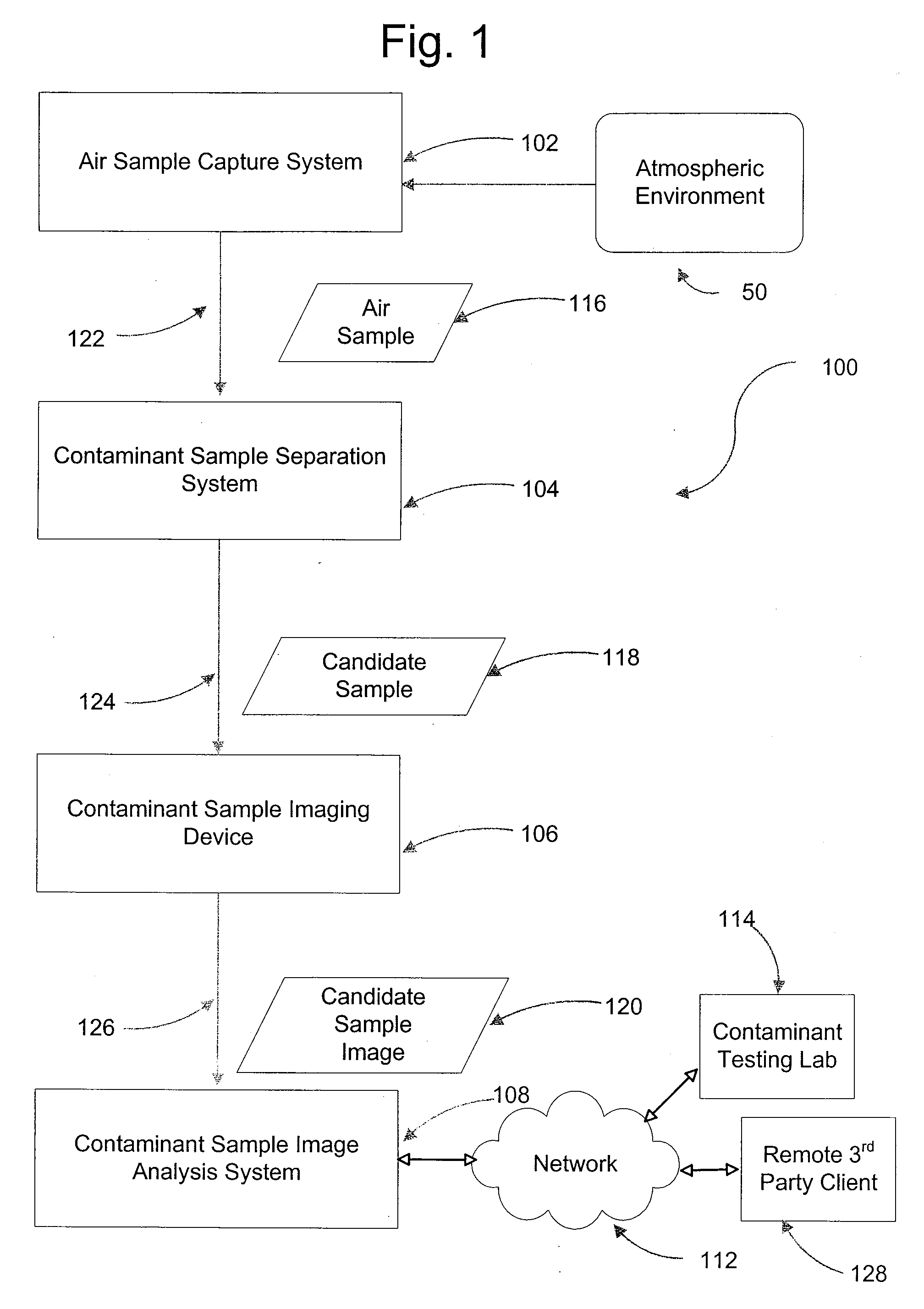Systems and methods for detection of an airborne contaminant
a technology of airborne contaminant and detection system, which is applied in the direction of instruments, material analysis, and withdrawal sample devices, etc., can solve the problems of increasing the toxicity of the attack, releasing toxic industrial gases and irritants, and insufficient airborne contamination detections to address the increased risk posed by current world events
- Summary
- Abstract
- Description
- Claims
- Application Information
AI Technical Summary
Benefits of technology
Problems solved by technology
Method used
Image
Examples
Embodiment Construction
[0030]Referring now to the drawings, FIG. 1 depicts an airborne contaminant detection system 100 consistent with the present invention. The airborne contaminant detection system 100 includes an air sample capture system 102, a contaminant sample separation system 104, a contaminant sample image device 106, and a contaminant sample imaging analysis system 108, which may be operatively connected to a contaminant testing lab 114 and a remote third party 128 via a network 112. The network 112 may be any known private or public communication network such as a Local Area Network (“LAN”), Wide Area Network (“WAN”), Peer-to-Peer Network, or the Internet, using standard communication protocols. The network may include hardwired as well as wireless branches.
[0031]As demonstrated in FIG. 1 and discussed in further detail herein, the air sample capture system 102 is operatively configured to capture an air sample 116 from an atmospheric environment 50 surrounding or in proximity to the air samp...
PUM
| Property | Measurement | Unit |
|---|---|---|
| volume | aaaaa | aaaaa |
| diameter | aaaaa | aaaaa |
| temperature | aaaaa | aaaaa |
Abstract
Description
Claims
Application Information
 Login to View More
Login to View More - R&D
- Intellectual Property
- Life Sciences
- Materials
- Tech Scout
- Unparalleled Data Quality
- Higher Quality Content
- 60% Fewer Hallucinations
Browse by: Latest US Patents, China's latest patents, Technical Efficacy Thesaurus, Application Domain, Technology Topic, Popular Technical Reports.
© 2025 PatSnap. All rights reserved.Legal|Privacy policy|Modern Slavery Act Transparency Statement|Sitemap|About US| Contact US: help@patsnap.com



